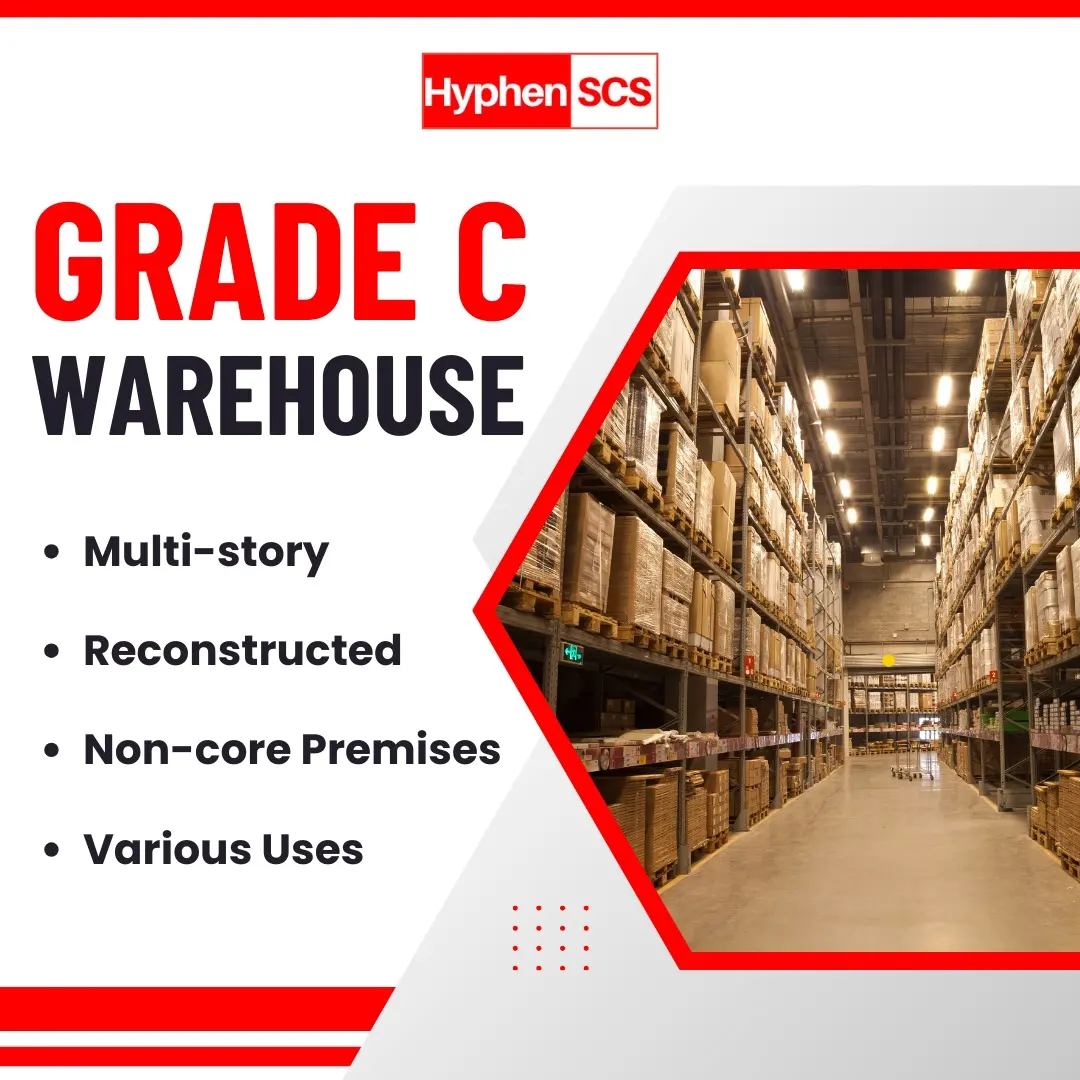
In a general sense, a “Grade C” warehouse implies a mid-range or average facility. This could mean that it meets basic standards but might lack some of the features or conditions associated with higher-grade warehouses.
A Grade C warehouse is a type of warehouse that was not originally designed or built for warehousing purposes but has been reconstructed or renovated to serve as a storage facility.
- Non-core Premises:
Grade C warehouses are usually converted from non-core premises, such as hangars, manufacturing workshops, or other buildings that were not intended for warehousing.
This means that they may not have the optimal layout, structure, or infrastructure for efficient and safe warehousing operations. They may also have lower quality standards and regulations than other classes of warehouses.
Reconstructed:
Grade C warehouses are often reconstructed or refurbished to meet the basic requirements of warehousing, such as flooring, lighting, ventilation, fire safety, and power backup.
However, they may not have the latest technology, equipment, or amenities that are available in higher-class warehouses. They may also have limited or no customization options for the customers.
Multi-story:
Grade C warehouses are typically multi-story buildings, which may pose some challenges for warehousing logistics. For example, they may have lower ceilings, narrower aisles, and fewer docks than single-story warehouses.
They may also require freight elevators or ramps to move goods between floors, which can increase the loading and unloading time and cost.
Various Uses:
Grade C warehouses are often used for various purposes, such as storage, distribution, manufacturing, or retail. They may cater to different types of customers, products, and industries, depending on the location, demand, and availability of the warehouse.
They may also have flexible lease terms and rates, which can attract small or medium-sized businesses that need short-term or low-cost warehousing solutions.
